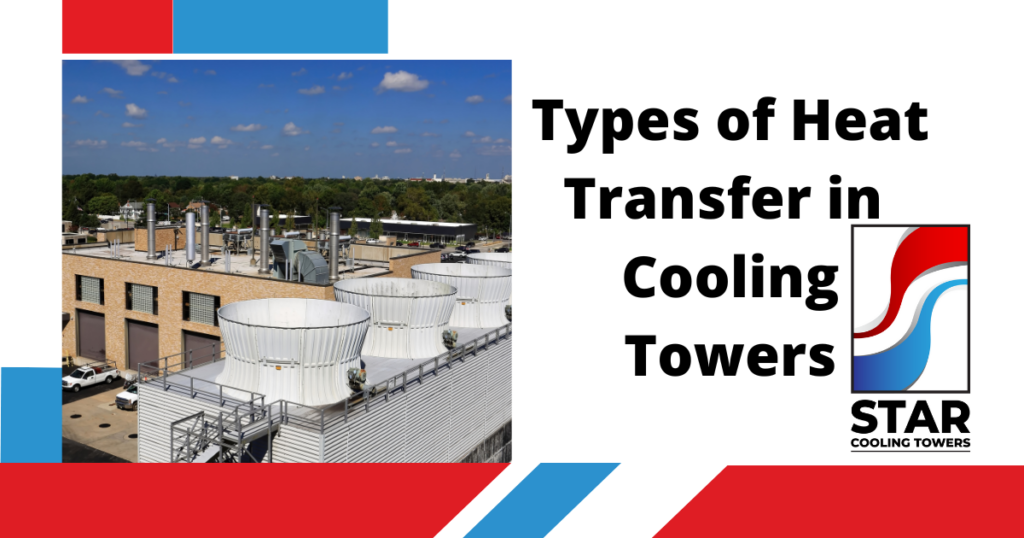
Cooling towers operate by transferring heat from one location, such as the building and processes, by using water or coolant that will interact with air to then disperse the heat outside. The type of heat transfer process can vary based on operations. There are several heat transfer systems that a facility owner can select from that works best with their operations. Let’s check out 3 types of these heat mechanisms.
Wet Cooling Heat Transfer
Wet cooling transfer mechanism are common for large facilities and applications. Heat becomes transferred into water as it travels to the fill media and spreads out. The water comes into direct contact with the air, as an evaporation process occurs. The heat and some of the hot water mixes into the air as it travels from the tower and outside. A basin at the bottom of the tower catches the remaining water that becomes recirculated through the system. This type of heat transfer application is referred to as an open circuit system. The main benefit of this system is to spread the water out as much as possible when it comes in contact with the fill media. It allows for maximum heat transfer over a large surface area so that the process occurs quickly.
Dry Cooling Heat Transfer
In the dry cooling process, water or coolant travels through tubes. The heat becomes transferred into the liquid and moves towards the cooling tower. Air in the cooling tower passes around the tubes, as the heat from the liquid passes through the tube wall and into the air. The now heated air then travels out the cooling tower. What makes this process different from wet cooling is that the water is fully enclosed and never comes into direct contact with the air. These processes are called closed recirculating systems as water does not evaporate from out tech system.
Fluid Cooling Heat Transfer
Fluid cooling heat transfer has some processes that involve both dry cooling and wet cooling systems. Considered a closed circuit system, both the water and air are inside coils like a dry cooling system. Heat becomes absorbed by the water and travels through the coil where it comes in direct contact with the air. The heat becomes transferred into the air as then the hot air moves out of the cooling tower and away from processes. The main advantage with this system is that it prevents contaminated air from outside to mix with the water, cutting back on pollutants that can enter the system. If you are looking for prefabricated cooling towers for your commercial processes, contact Star Cooling.

